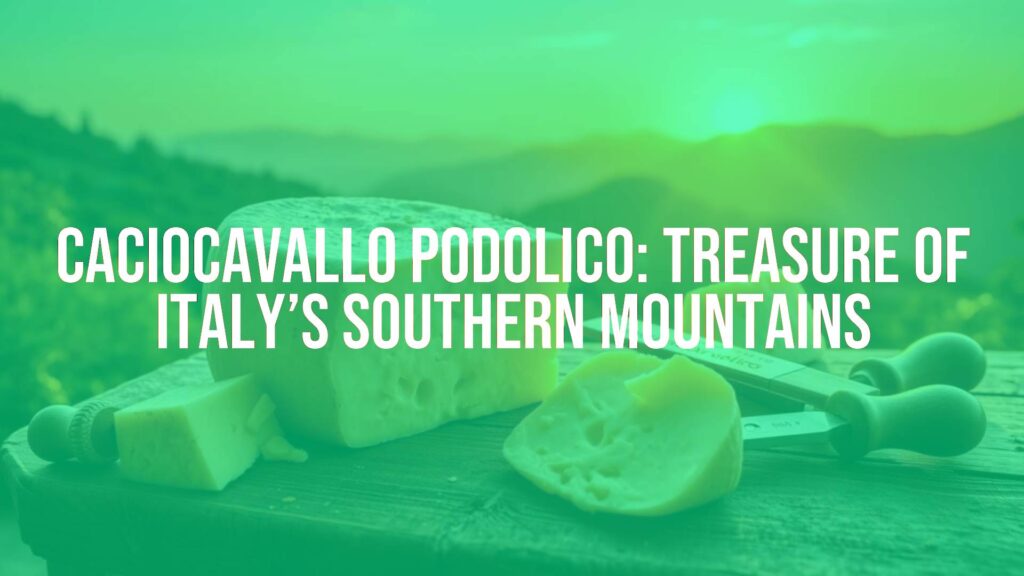Introduction to Caciocavallo Podolico
Caciocavallo Podolico is a rare and esteemed cheese hailing from southern Italy, renowned for its robust flavor and artisanal pedigree. Made exclusively from the milk of Podolica cattle, which graze freely in remote, rugged highlands, this cheese holds a revered place among Italy’s gastronomic treasures. Its unique characteristics, age-old methods, and intense regional ties make Caciocavallo Podolico stand out in the realm of Italian cheeses.
Origins and Cultural Legacy
The roots of Caciocavallo Podolico stretch deep into Italian history. The Podolica breed, believed to have ancient connections to cattle herded by nomadic peoples across Eurasia, now survives in the mountainous terrain of Campania, Basilicata, Calabria, and Puglia. The cheese is traditionally crafted in these regions, where families have handed down knowledge for generations. Due to its limited production and reliance on the seasonal grazing habits of Podolica cattle, it is considered a symbol of rural resilience, pride, and artisanal craftsmanship.
Distinguishing Features
What sets Caciocavallo Podolico apart from other varieties of caciocavallo and similar cheeses is its distinct aromatic complexity. Made with raw, unpasteurized milk, the cheese is shaped into its characteristic teardrop form, resembling a large, elongated gourd. Its texture is dense and slightly fibrous, growing firmer and flakier with prolonged aging. The flavor profile evolves from sweet and lactic in younger wheels to intensely savory, nutty, with hints of herbs, roasted chestnut, and a lingering spicy finish in matured forms. True Caciocavallo Podolico often boasts a buttery aroma, thanks to the rich botanicals the free-ranging cows eat.
Traditional Production Methods
Production respects tradition at every step. Milking is strictly seasonal, as Podolica cows produce only small amounts of milk, which is prized for its high fat content and aromatic qualities. The curd is stretched (pasta filata) while still hot, then hand-shaped and tied in pairs to age by hanging over wooden beams—hence the “cavallo” (horse) in its name, referring to the way the cheeses are draped like saddlebags. Aging can last from several months to over three years, with longer maturing amplifying both flavor and value.
Enjoying and Pairing Caciocavallo Podolico
Caciocavallo Podolico is typically savored in thin slices to fully appreciate its aroma and evolving taste. In southern Italian households, it often makes a bold centerpiece on cheeseboards, accompanied by robust red wines such as Aglianico or Taurasi that can rival its intensity. Common accompaniments include rustic breads, figs, honey, or dried fruits, all of which gently balance the cheese’s bold flavors. Shavings of the oldest wheels sometimes finish pasta dishes or enrich hearty salads, lending an umami punch.
Significance and Modern Revival
Beyond gastronomy, Caciocavallo Podolico is deeply intertwined with cultural identity and regional economy. Production preserves both a vulnerable cattle breed and ancient cheese-making customs at risk of disappearance. In recent years, heightened interest in artisanal and heritage foods has led to a kind of revival, with enthusiasts traveling the southern Italian mountains in search of authentic wheels direct from family-run dairies.
Tips for Selecting and Serving
When seeking Caciocavallo Podolico, look for cheeses with natural yellowish rinds and the characteristic tear-drop shape, often labeled with details about the producing farm. Allow wedges to come to room temperature before serving to unlock the full spectrum of aromas. While enjoying it on its own is a must, experimenting with grating aged Caciocavallo Podolico over hot dishes or savoring it with a splash of regional honey can reveal new depths of flavor.

